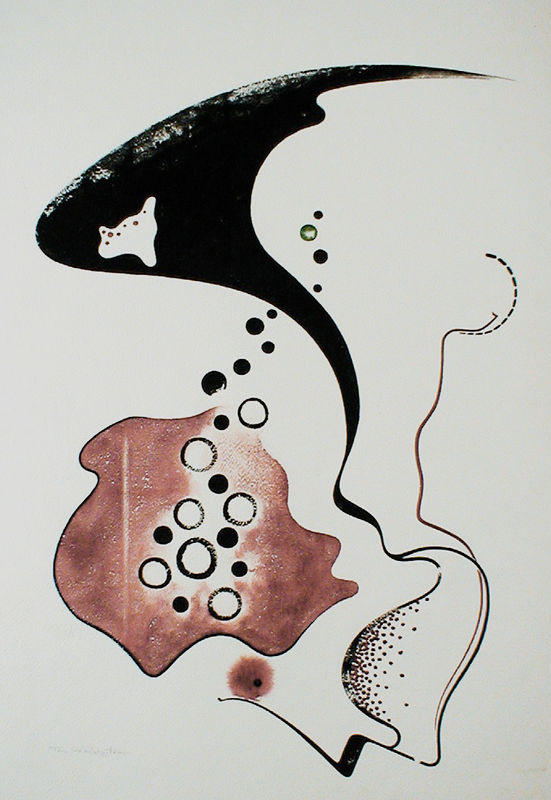
19th, 20th & 21st Century Fine Prints
707-546-7352 · fax 707-546-7924 · web: www.annexgalleries.com · email: artannex@aol.com
#20 by Thomas Arthur Robertson

#20
Thomas Arthur Robertson
#20
Thomas Arthur Robertson
1911 - 1976 (biography)Little Rock, Arkansas artist Tom Robertson studied with Modernist painter Paul Ninas in New Orleans in 1935. Ninas had studied in Vienna and Paris where he attended the Académie des Beaux-Arts and was influenced by fauvism, surrealism and cubism. He brought these concepts to his students in New Orleans.
Robertson returned to Little Rock in 1937 where he began teaching art. He acquired a local reputation as a portrait painter, however, he exhibited all abstract paintings in a solo exhibiton at the Delgado Museum in New Orleans around 1940 and, in 1945, he exhibited abstract, non-objective watercolors in Andover, Massachusetts at the Addison Gallery.
In the late 1930s and 1940s abstraction was generally ridiculed and diminished in the American art scene, yet, even in primarily conservative Arkansas, Robertson painted his personal vision and explored the works of Kandinsky, Surrealism and other "modern" European schools.
Around 1940 Robertson had an exhibition of his abstractions at the Little Rock Public Library. A review from the time of his watercolor #32 attempted to help the public understand: "What does this picture mean? Exactly what you feel it means....In looking at a non-objective painting the viewer should disassociate all objective ideas from his mind and feel the painting emotionally.
"'The nearest approach to an explanation of 'non-objective painting' Mr. Robertson says 'lies in a comparison with....symphonic works, such as those of Brahms. At the first hearing, you may not like the music because you have no emotional reaction. But the fifth or sixth hearing the music will begin to tell you something....In what it tells you lies the value of the music....As in non-objective painting, the mood should be left to you to create'"
